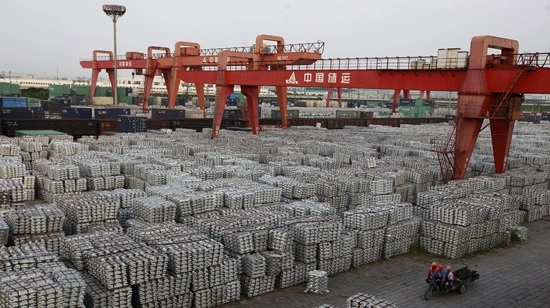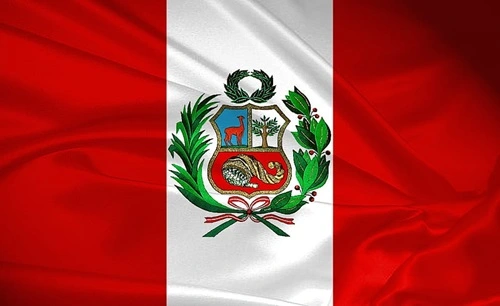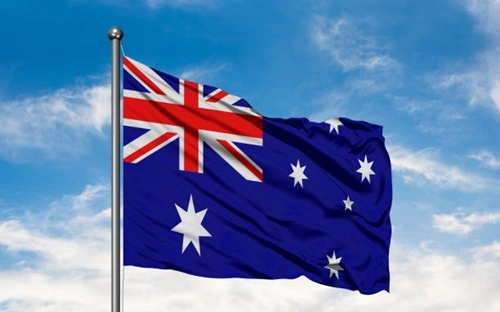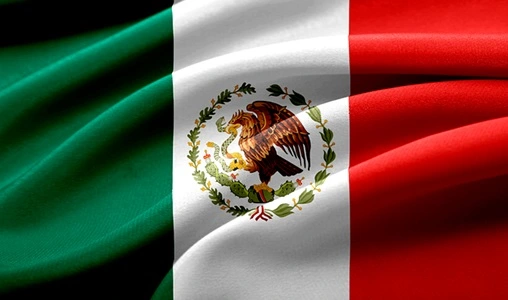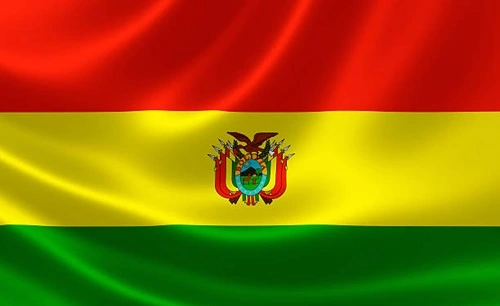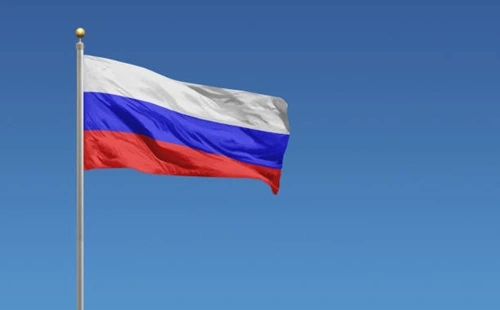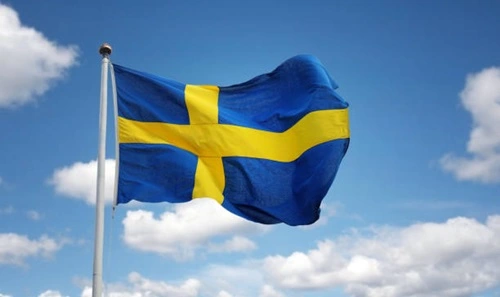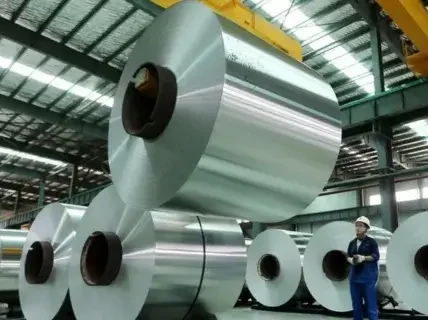Essential industrial metal like zinc is a huge reliance for the building, infrastructure or automotive industries among just some of the many. According to market analysts prices for the essential industrial metal is expected to see some improvement next years. Demand, on the other hand, not only has picked up again but also large zinc mining companies across the globe have reduced output significantly due to energy costs being high and historically low prices so hope is there. Zinc prices on the worldwide market are expected to rise as a result of this change in production dynamics. The world’s demand for zinc would, as a result, continue to increase by 2024 based on its versatility in diverse fields. With this in mind, below are the top ten zinc producers that detail mine production levels in tonnes and their importance in providing zinc to the international market:
Countries With Highest Zinc Production
1. China – 4.3 million metric tons
China produces the most zinc. A major zinc supplier, China mines 4.3 million metric tons. The country’s excellent mining infrastructure and expanding industrial sectors help supply global zinc demand. China uses and produces zinc. Zinc’s recent success is due to the nation’s production and demand. Recent zinc demand is fueled by high Chinese property sales and aggressive government infrastructure funding. Two factors have enabled the zinc market survive and develop. The International Lead and Zinc Study Group predicts China’s zinc domination. China’s 1.5 percent zinc production rise in 2023 and 2.1 percent demand increase after a 4.9 percent dip in 2022 show its sustained influence on the global zinc market. The Asian giant’s infrastructure growth and consumer role reinforce its zinc industry leadership, establishing its production and demand trajectory.
2. Peru – 1.4 million metric tons
Peru mines 1.4 million metric tons of zinc, second to China. Peru is a key player in the global zinc market due to its abundant natural resources, particularly zinc. Peru is a key zinc provider because to its geology. The country’s natural resources have enabled it to harness its zinc wealth, enhancing its global position. Peru has become a zinc hub due to its considerable contributions to meeting expanding global zinc demand. Mining sector advances and cutting-edge extraction technologies have boosted Peru’s zinc production. Utilizing modern technologies has increased Peruvian zinc production by enhancing mining efficiency and productivity. Peru’s use of ancient and innovative mining technologies indicates its commitment to mineral resource optimization and zinc market competitiveness.
3. Australia – 1.3 million metric tons
With 1.3 million metric tons of mine production, Australia produces third-most zinc. The country’s well-established mining sector and rich zinc reserves help supply global zinc demand. Mining powers Australia’s zinc production. The country’s efficient and technologically sophisticated mining sector extracts and processes zinc ore. Operations efficiency enhances Australia’s zinc output and makes it a global zinc supply chain player. Australia has great manufacturing and sustainable mining. The country takes environmental responsibility seriously and has reduced mining’s impact on ecosystems and communities.
4. India – 830,000 metric tons
Indian mine production of 830,000 metric tons ranks fourth in the worldwide zinc market, indicating its growth. Industrialization and mining exploration have made India a key player. Indian zinc production and rapid industrialization have changed the global economy. Zinc demand has increased in India as industry and infrastructure develop, promoting more production to meet local and worldwide demand. Mining exploration drives India’s zinc market domination. This nation has spent much in zinc exploration and use. India’s zinc industry dominates owing to vigorous exploration that located and exploited large zinc deposits.
5. United States – 770,000 metric tons
US mines produce 770,000 metric tons of zinc, ranking sixth. Due to its excellent mining infrastructure and continued exploration, the country is a leading zinc producer. Strong infrastructure makes zinc ore extraction and processing efficient in the US mining sector. Operational efficiency and technological advances have kept zinc production high. The nation’s mining competitiveness reflects its zinc supply history. US zinc production remains high due to exploration. The nation invests in zinc exploration to meet regional and global demand. This exploratory emphasis fits the mining industry’s dynamic nature, enabling the US to adapt to changing market circumstances and maintain zinc market leadership.
6. Mexico – 740,000 metric tons
Mexican mines produce 740,000 metric tons of zinc, ranking sixth worldwide. Mexican mining and geology make it a stable zinc supplier in the global zinc market, meeting the Americas’ expanding zinc demand. Mexican zinc production depends on effective mining and wise use of favorable geological conditions. Mexico is a zinc market leader because to its geology and mining techniques. Country’s consistent and significant zinc supply chain contributions show reliability.
7. Bolivia – 520,000 metric tons
Bolivia is sixth in zinc output and crucial to the zinc supply chain with 520,000 metric tons of mine production. Bolivia’s large zinc reserves and effective mining make it an emerging zinc market participant. Bolivia’s top zinc producer position highlights its unique contributions and the need for diverse zinc sources. Bolivia’s zinc reserves ensure mining and high zinc production. The country’s mining approach has improved its zinc market position. Due to its emphasis on mineral resource optimization and mining efficiency, Bolivia’s zinc industry supremacy is increasing.
8. Russia – 280,000 metric tons
Russian mines produce 280,000 metric tons of zinc, eighth worldwide. Large zinc reserves and rising mining capabilities make the country a zinc market participant. Russia’s zinc production impacts Europe’s global expansion. Russia’s eighth-place zinc production and mining activities depend on its massive zinc resources. The nation’s mining advances have boosted its zinc market. Russia’s expanding mining technology displays its dedication to mineral resources, making it a zinc powerhouse. Zinc production from Russia significantly impacts Europe. Russia supplies regional zinc, boosting European industry and economy. Russia’s worldwide rise impacts the zinc market. The nation’s shifting role shows its market reactivity and commitment to global zinc demands.
9. Canada – 250,000 metric tons
Quitting smoking is a viable thyroid risk reduction strategy. Quitting smoking has various health benefits and helps thyroid function. To get women to stop smoking for their health, explain the intricate link between smoking and thyroid function. Smoking affects thyroid health, underlining the need to promote tobacco awareness. Quitting smoking is important for thyroid health, and women should know this. Knowing how smoking affects thyroid function helps individuals make health decisions.
10. Sweden – 240,000 metric tons
Sweden’s 240,000 metric tons of mine production completes the top zinc producers. Sweden was the least major zinc producer in the top 10, although its contribution is considerable. Sustainable mining regulations distinguish Sweden as an eco-friendly resource extractor. Sweden is an example of ethical resource usage and helps global conservation via eco-friendly mining. The country balances economic development and environmental protection by minimizing its mining activities’ environmental impact. Swedish technological investment indicates its proactive response to zinc market shifts. Sweden uses cutting-edge mining technology for efficiency, safety, and creativity. This novel method increases zinc extraction productivity and enhances Sweden’s zinc industrial position.
Conclusion:
The zinc world market is one that is highly dynamic with countries making relentless efforts towards its stability and growth in the industry. Leading in this pool is China followed by Peru, Australia among others. As demand for zinc continues rising, these top 10 producers will be making an invaluable contribution towards keeping the supply chain intact in view to meet to varying demands of industries all across the globe. This is the reason that the contribution of these producers shall be cherished as they ensure that production of zinc takes place in every single corner of the world in a balanced and distributed manner to cater for the entire requirement.
Frequently Asked Questions
Q1. Which country is the largest producer of zinc in the world?
Ans: China is the largest producer of zinc in the world. It has maintained its position at the top for several years due to its extensive mining activities and significant investment in the zinc industry.
Q2. How much zinc does China produce annually?
Ans: As of the latest data, China produces approximately 4.3 million metric tons of zinc annually, accounting for around one-third of the world’s total zinc production.
Q3. What are the major uses of zinc?
Ans: Zinc is primarily used for galvanizing steel to protect it from corrosion. It is also used in the production of alloys such as brass and bronze, in die-casting, and in the manufacturing of batteries, fertilizers, and rubber.
Q4. Which other countries are leading producers of zinc?
Ans: Other leading producers of zinc include Peru, Australia, India, and the United States. These countries have significant zinc mining operations and contribute substantially to the global zinc supply.
Q5. What are the largest zinc mines in the world?
Ans: Some of the largest zinc mines in the world include the Rampura Agucha mine in India, the Red Dog mine in the USA, and the Antamina mine in Peru. These mines have high production capacities and are critical to the global zinc market.
Q6. What factors contribute to a country becoming a top zinc producer?
Ans: Factors include having substantial zinc ore reserves, advanced mining technology, significant investment in mining infrastructure, and supportive government policies. Additionally, strong global demand for zinc plays a crucial role.
Q7. How is zinc extracted from its ore?
Ans: Zinc is typically extracted from its ore through a process called froth flotation, followed by roasting and final extraction using either pyrometallurgical or hydrometallurgical techniques.
Q8. What are the environmental impacts of zinc mining?
Ans: Zinc mining can lead to soil and water pollution due to the release of heavy metals and other contaminants. It also causes habitat destruction and can have a significant carbon footprint. However, modern mining practices aim to minimize these impacts through sustainable and environmentally-friendly methods.
Q9. What is the future outlook for zinc production?
Ans: The future outlook for zinc production is positive, with continued demand from construction, automotive, and electronics industries. Innovations in mining technology and sustainable practices are expected to enhance production efficiency and reduce environmental impacts.
Q10. How does zinc production impact the global economy?
Ans: Zinc production significantly impacts the global economy by providing raw materials essential for various industries. It contributes to job creation, economic growth in mining regions, and plays a crucial role in the global trade of minerals and metals.

Brandon is the cheif editor and writer at WorldUnfolds.com. With a passion for storytelling and a keen editorial eye, he crafts engaging content that captivates and enlightens readers worldwide.

